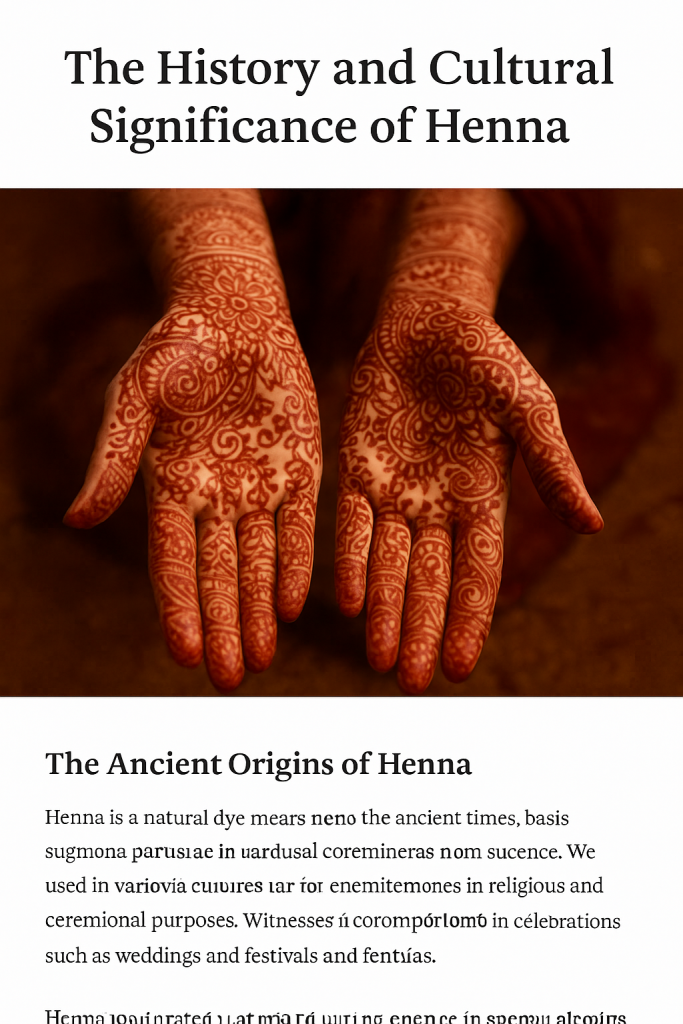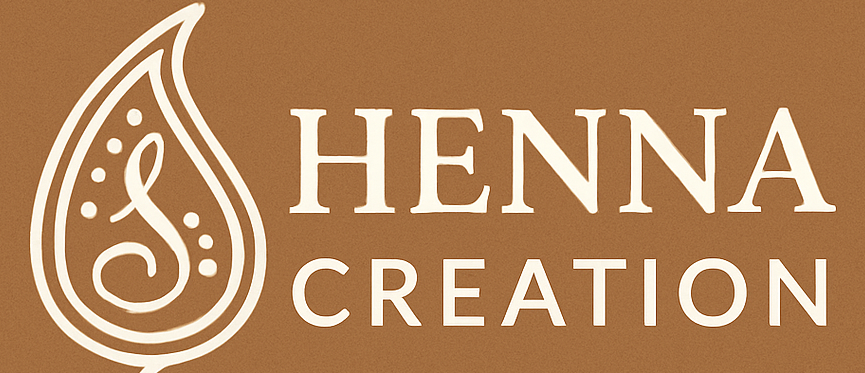What is Henna?
Henna is a natural dye made from the powdered leaves of the Lawsonia inermis plant. When applied to the skin in paste form, it leaves behind a reddish-brown stain that can last from a few days to several weeks. The practice of using henna for body decoration and ritual purposes spans across Africa, the Middle East, South Asia, and beyond.

Origins of Henna
Early Use in Ancient Civilizations
Historical records trace henna back over 5,000 years. Archaeologists have found evidence of henna use in ancient Egypt, where it was applied to the hair and nails of mummies as a symbol of protection and blessing in the afterlife. Cleopatra herself was believed to use henna for cosmetic purposes.
Spread Across Cultures
As trade routes expanded, henna spread across different cultures, including India, Persia, and North Africa. Each region adapted henna in unique ways—developing distinct styles of application and assigning different cultural meanings.
Cultural Significance of Henna
Henna in Indian Traditions
In India, henna plays a central role in weddings. Bridal henna designs symbolize love, prosperity, and good luck. The darker the henna stain, the stronger the bond between the couple is believed to be. Apart from weddings, henna is also applied during festivals like Diwali, Karva Chauth, and Teej.
Henna in Middle Eastern and North African Cultures
In Middle Eastern and North African countries, henna ceremonies are a joyful pre-wedding ritual. Women gather to celebrate the bride, singing, dancing, and applying intricate designs that carry blessings of fertility, joy, and happiness.
Henna in African Traditions
In African cultures, henna is used not only for weddings but also for childbirth ceremonies, community gatherings, and protection rituals. The designs often feature bold geometric patterns and tribal motifs.
Henna in Modern Times
Today, henna has crossed cultural boundaries, becoming a global form of body art. It is celebrated at festivals, fashion shows, and even casual parties. Despite its modernization, henna still holds strong cultural roots wherever it is practiced.
Symbolism of Henna Designs
Common Motifs and Meanings
- Flowers: Beauty and new beginnings.
- Paisleys: Fertility and abundance.
- Mandala Patterns: Spiritual wholeness and balance.
- Vines and Leaves: Growth and vitality.
Colors and Beliefs
Traditionally, the depth of the henna color carries symbolic meaning. A darker stain is often associated with deeper love, prosperity, or blessings.
Henna Beyond Celebrations
Spiritual and Healing Properties
Henna is believed to carry cooling and healing properties. In ancient times, it was used as a natural remedy to reduce fever, soothe headaches, and protect the skin. Some cultures used henna to ward off evil spirits and bring good luck.
Fashion and Art
Modern artists and designers have incorporated henna-inspired motifs into clothing, jewelry, and even interior design. Its timeless appeal continues to inspire creativity.
FAQs
1. How long has henna been used?
Henna has been used for over 5,000 years in various civilizations, including ancient Egypt, India, and the Middle East.
2. Is henna safe for the skin?
Natural henna made from the Lawsonia inermis plant is safe for the skin. However, black henna or chemically enhanced products should be avoided due to possible skin reactions.
3. How long does henna last on the skin?
Henna typically lasts 1 to 3 weeks, depending on skin type, location of application, and aftercare.
4. What occasions use henna most?
Henna is commonly used for weddings, festivals, religious celebrations, and community rituals.
5. Can henna be used for hair dye?
Yes, henna is a natural hair dye that strengthens hair, adds shine, and provides a reddish tint.
Conclusion
Henna is more than a decorative art—it is a thread that connects generations, cultures, and traditions. From ancient Egypt to modern fashion runways, henna continues to embody beauty, spirituality, and cultural pride. Whether used in weddings, festivals, or everyday creativity, the history and cultural significance of henna remind us of the power of art to tell stories and celebrate life.
